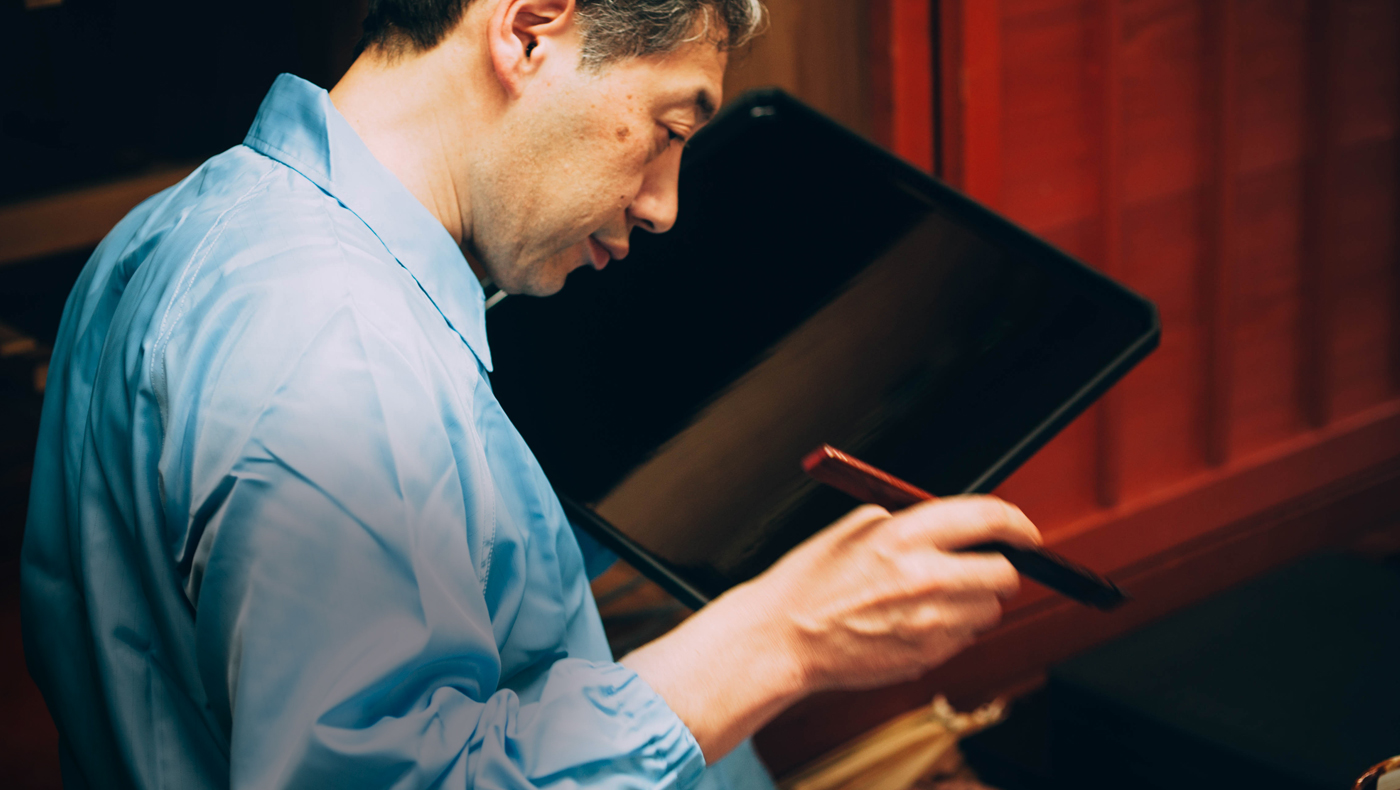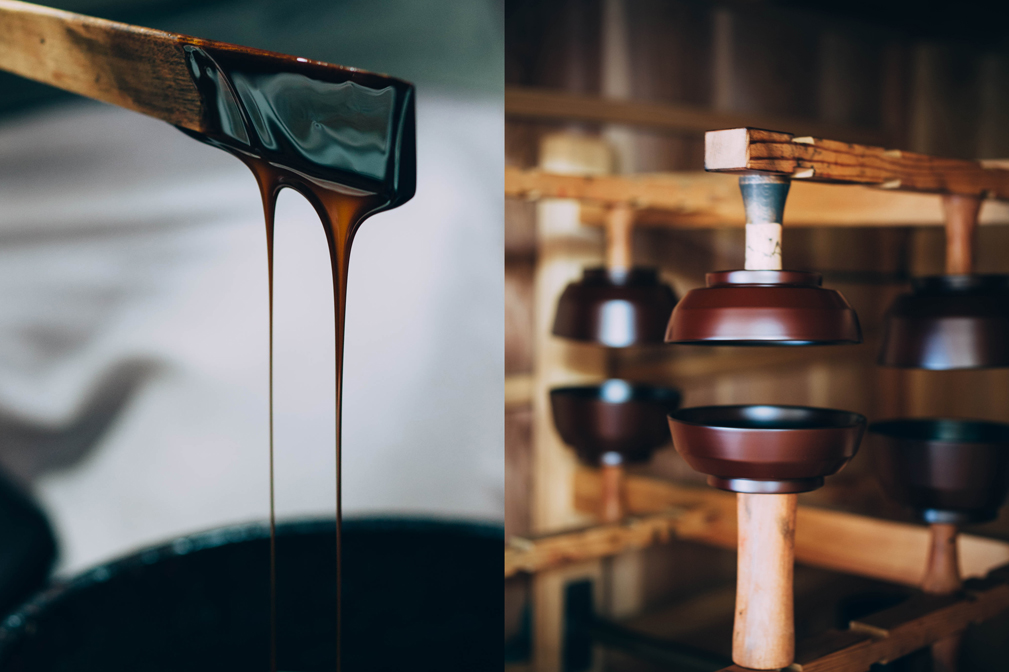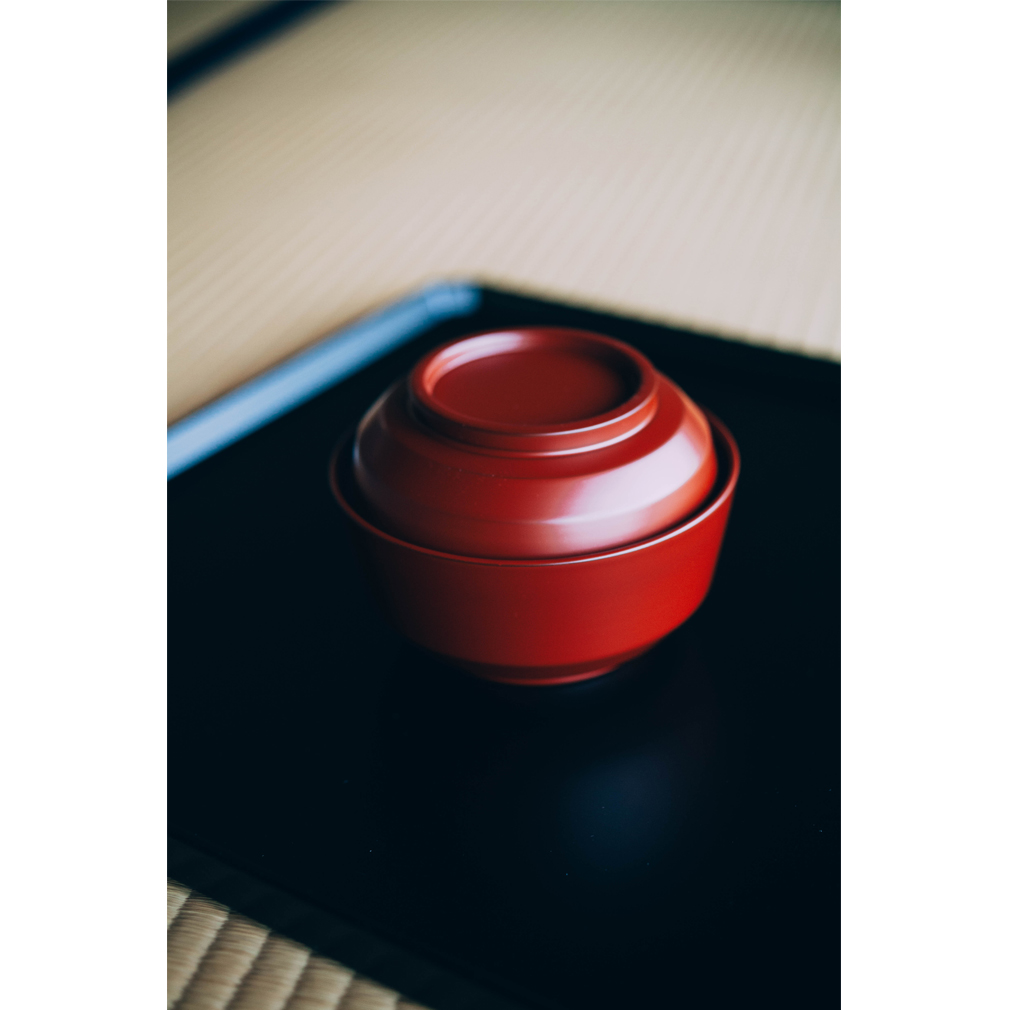Thread by Thread
Essays by Prairie Stuart-Wolff


The Long View
Takahiro Yamamoto sits cross-legged before a stack of trays. One by one he brushes each with a fresh coat of black lacquer. His attention is steady and his movements measured so as not to stir up any debris that could embed on the surface. These square black trays, used daily at Kodaiji Wakuden, have returned to have their surface renewed.
“One of lacquer’s particular merits is that items can be repaired,” he says. It’s a defining characteristic of his craft, he says, and one that he aspires to exercise as a maker. “I consider it my responsibility to make work that can be fixed. We have always worked this way in our family.” Trained by his father, Yamamoto continues to work with the skills and perspective he inherited. As he moves from one tray to the next, he installs each in a cabinet behind him where temperature and moisture are carefully monitored. Made from the sap of Urushi trees, the lacquer finish cures in a warm, humid environment into a pleasingly smooth, hard, heat resistant surface.

The satin sheen of a lacquered surface is singularly alluring. It absorbs light and gently casts it back, emitting a soft glow as though lit from within by candlelight. Lacquer ware is seasoned with use and its luster grows. This quiet beauty, so resonant with Japan’s aesthetic, belies its strength and throughout the ages lacquer has been employed to create beautiful, durable wooden objects. Japan is rich in forested land and timber which has long been a reliable material for buildings, furniture, tools, and utensils. But bare wood is susceptible to mold and decay, especially in Japan’s warm, wet climate. Both decorative and functional, a lacquer coating protects wood while elevating its aesthetic.
With his work finished, Yamamoto becomes animated and loquacious. His eyes sparkle as he eagerly shares a range of thoughts on contemporary culture. He is disquieted by the short lived trends of the day, by a cult of the new and planned obsolescence that locate us in an era of impermanence. Artists and consumers alike seem less concerned with the long view and with the qualities of durability and longevity central to his work. He sees a rise in the popularity of daily utensils made of plain wood and wonders about their resilience over time. Yamamoto’s heritage of skill and intentions tether him to previous generations, to a time when he believes people cared more for quality items, invested in them and used them throughout a lifetime. But around him the world is shifting, which only serves to reaffirm his commitment to make work that can be repaired and last as long as one chooses to use it. From this place is born his desire to provide continuity and express this particular trait unique to lacquer crafts. Few artisans have an ongoing relationship with their original works in the way he does, reconditioning them to ensure their longevity as beautiful instruments of daily life.

